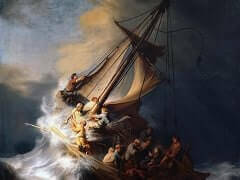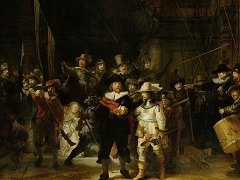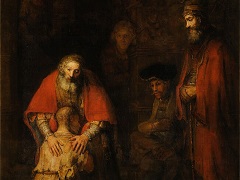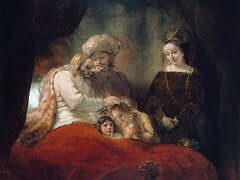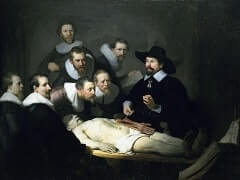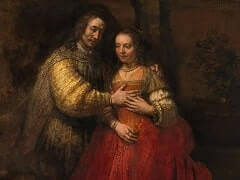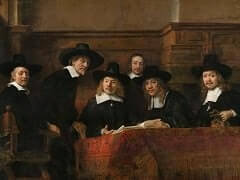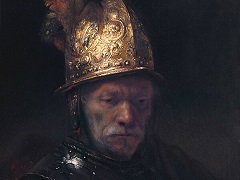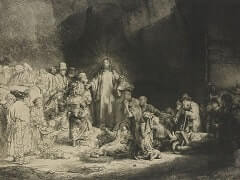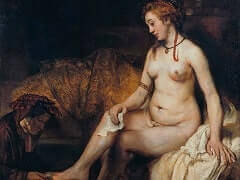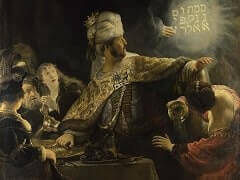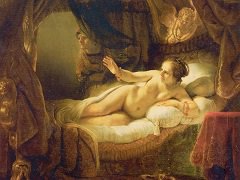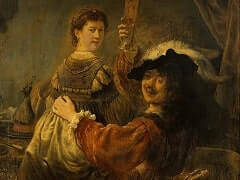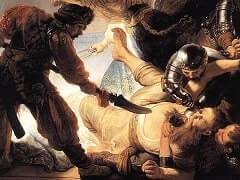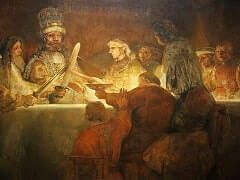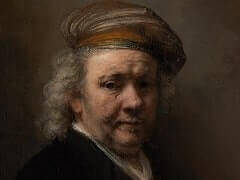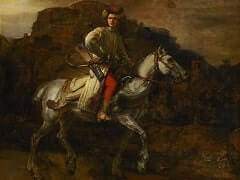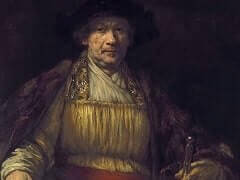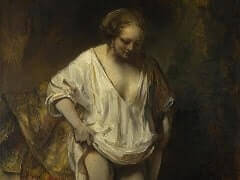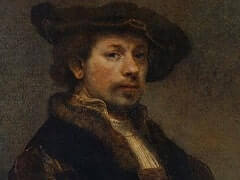Supper at Emmaus, 1628 by Rembrandt
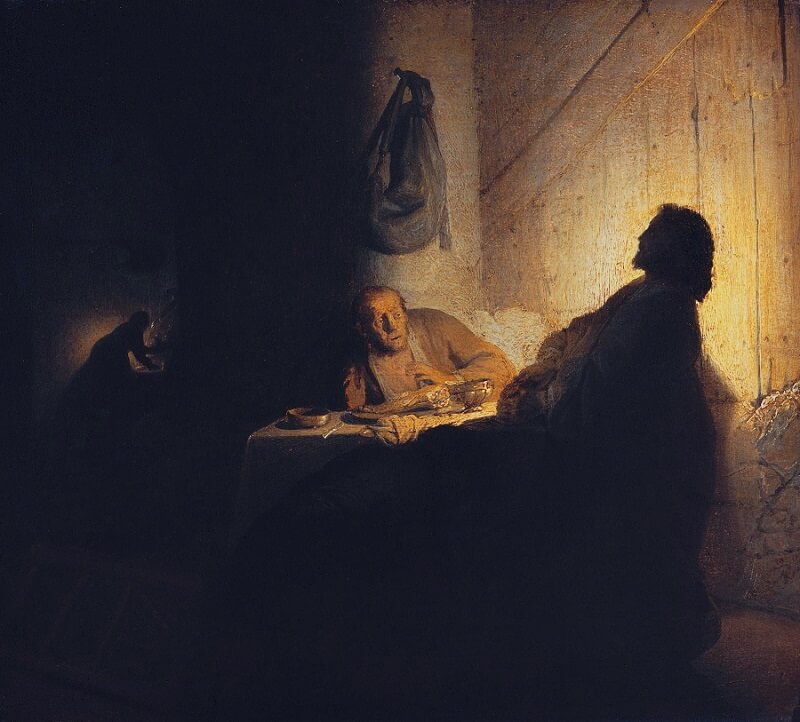
Rembrandt's creative development may be traced in the two paintings and two etchings he executed of the Supper at Emmaus at different points in his career. The subject is from Luke 24:13-35. The risen Christ reveals himself to two disciples met on the road to Emmaus as he breaks bread and blesses it at an inn - a theme much favoured in the Protestant Netherlands, which did not recognize the sacrament of Eucharist instituted at the Last Supper.
Although Rembrandt made three drawings after Leonardo's Last Supper, which he knew from copies and engravings, its importance for him is also apparent in his later depictions of the more intimate Supper at Emmaus.
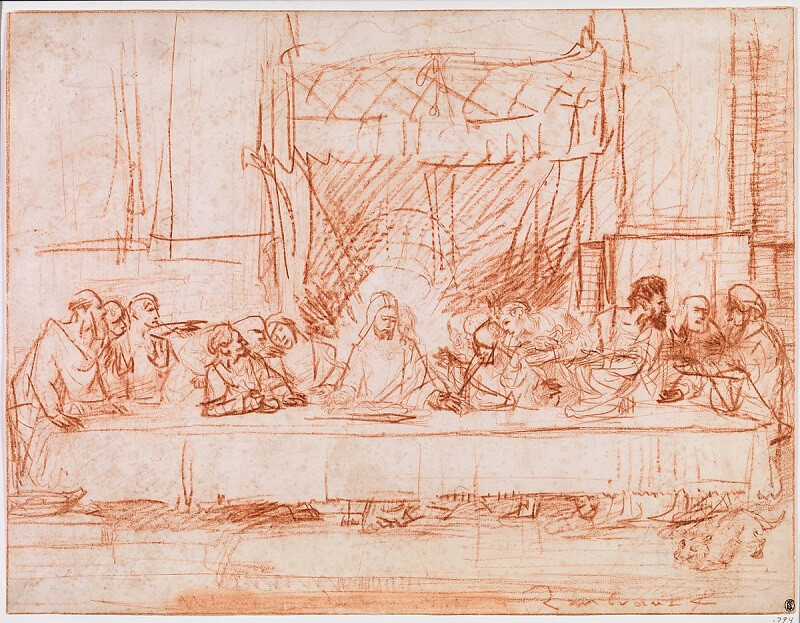
But Supper at Emmaus at owes nothing to Leonardo da Vinci and much to Caravaggio. This is apparent in its dramatic action and startling contrasts of light and shade.
In the centre are the two disciples, one (barely visible) thrown to his knees and the other, still seated, struck dumb by the discovery; while, in the background left, a serving woman works in the kitchen unaware of the main action. Everything about the picture seems calculated to astonish the viewer - the lunging poses, wideeyed expressions and theatrical lighting - and already reveals the marks of a born dramatic artist, albeit one still somewhat obvious in his intentions.

